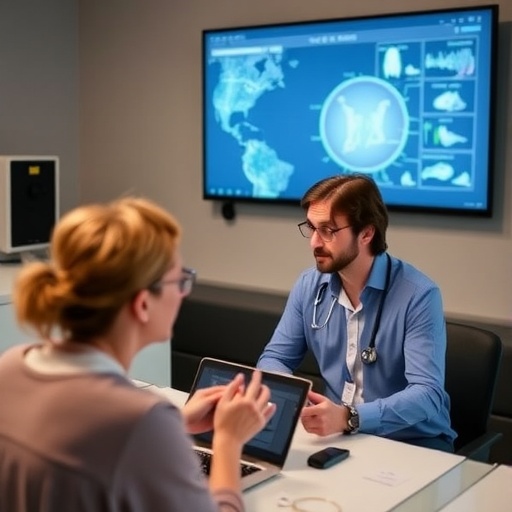In recent years, the integration of digital technologies into medical education has opened up new avenues for enhancing instructional methods and ultimately improving patient care. One innovative approach that has garnered attention is the concept of E-Learning by Concordance (E-LbC), a framework aimed at bolstering clinical reasoning skills among medical students and professionals. In a groundbreaking study published in “BMC Medical Education,” researchers delve into the effectiveness of this digital recipe for fostering clinical excellence. The findings indicate promising implications for the future of medical training.
The study, conducted by a team led by Dr. H. Aboueisha and colleagues, investigates the correlation between e-learning methodologies and the enhancement of clinical reasoning capabilities. The researchers focused specifically on how structured digital content could facilitate better understanding and retention of critical medical knowledge. By employing a quasi-experimental design, they meticulously measured the impact of the E-LbC framework on a cohort of medical trainees.
Significantly, the research highlights the role of interactive learning environments in shaping clinical reasoning. Traditional instructional methods, which often rely heavily on rote memorization, are increasingly seen as inadequate in preparing students for the complexities of real-world medical scenarios. The E-LbC approach, which emphasizes engagement through digital platforms, addresses this gap by leveraging multimedia resources and interactive content. This allows learners to explore clinical cases in a dynamic setting, fostering deeper comprehension and critical thinking skills.
The study’s findings underscore the advantages of digital learning in medical education. By employing real-world scenarios and case studies, the E-LbC framework encourages students to apply theoretical knowledge in practical situations. Moreover, digital platforms provide immediate feedback, which is crucial for reinforcing learning and correcting misconceptions. The researchers observed that participants who engaged with E-LbC exhibited marked improvements in their clinical reasoning abilities compared to those who followed conventional study methods.
Importantly, the E-LbC model does not operate in isolation; it requires a robust framework that incorporates collaborative learning and peer interaction. The study emphasizes the significance of concordance—alignment between educators, learners, and the educational material—in achieving desired learning outcomes. When students are actively engaged and supported by their peers and instructors, they are more likely to excel. This synergy fosters an environment conducive to learning and leads to improved competency in clinical reasoning.
Another key aspect of the research is the investigation of technology’s role in reducing educational disparities. With the rise of e-learning, access to quality medical education is improving for students in diverse geographic and socio-economic backgrounds. The digital landscape allows for the dissemination of high-quality educational resources, which, in turn, democratizes knowledge and bridges gaps that may have persisted in traditional settings. This aspect of E-LbC holds significant promise for leveling the playing field in medical education.
The researchers also considered the potential challenges associated with implementing the E-LbC framework in various educational institutions. Transitioning from traditional




